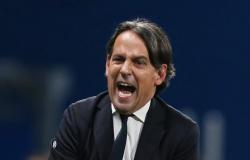That Sunday, June 19, 1960, was supposed to be a Sunday like any other for Formula 1. The Belgian public rushed to arrive and take their seats at the legendary Spa Francorchamps circuit. A Sunday of celebration, in short, like every time you go to see a motorsport event. That day however, joy gave way to tragedy. The Belgian weekend of the early 1960s has been called one of the most tragic in the history of Formula 1. Let us therefore try to relive everything that happened and commemorate all the tragic protagonists.
One hell of a GP
The Belgian GP came two weeks after the event in Holland. Jack Brabham won on the Zandvoort circuit with the Cooper and Bruce McLaren was leading the Formula 1 world championship after the stage in the Netherlands with the same car with 14 points, while Sterling Moss was 3 points behind him. In the first editions, the world championship not only gave few points but was also very balanced, because finishing the races was already a considerable result. The Spa Francorchamps stage, now as then, was a key event, given that the Belgian circuit is without a doubt the most beautiful in the world. The problem is that as well as being the most beautiful, it is also the most difficult. Death unfortunately is an old friend who tends to knock when you come running there.
The tests immediately gave a warning
It was clear from the weekend that it might be black, when one of the most acclaimed champions of the time had a serious accident. During practice for the GP, Moss lost control of his Lotus 18 due to a suspension problem. The wheel of the Briton’s car flew off and he could no longer control the car. Moss hit a wall at full speed, was thrown from his car and lost consciousness. McLaren was the first to arrive. He got out of his Cooper to give mouth-to-mouth resuscitation to his rival. Help arrived after almost 20 minutes, the pilot suffered fractures of three ribs, nose and legs. The dramas weren’t over yet in those cursed rehearsals.
Accidents were almost the norm back then, the show always went on anyway. Living with such dramatic events was “normal”. Once the session resumed, a promising young man named Mike Taylor paid the price. He lost control of his Lotus at a speed of 250 km/h and crashed violently into a tree. The tree was felled by the impact. Young Taylor suffered many fractures, and from that day on he never competed again. A double warning was given by Moss and Taylor, to which Formula 1 paid no heed. The next day the irreparable happened.
Formula 1 never recovered from that black weekend
The Sunday race started with reassurances on the conditions of the two drivers: they were seriously injured, but still alive. Brabham took off from Pole Position and took 2 and a half seconds from Tony Brooks. The race started as smooth as silk, but on lap number 19 Chris Bristow, sixth at the time, skidded at very high speed with his Cooper, fully hitting the protections. His car caught fire while Chris was thrown against a barbed wire by the impact. A commissioner who was the first to arrive at the incident picked up Bristow decapitated and lifeless. However, the race went ahead. On lap 2 Alan Stacey hit a bird: the blow was so terrible that it knocked the driver unconscious. Stancey, passed out, ended up with his Lotus against the barriers, the car caught fire and he was violently thrown out of the cockpit, dying instantly. The race ended regularly, with Brabham the winner. But no one wanted to party that day.
Jim Clark who had continued the race by getting out of his Lotus made a macabre discovery. The nose of his car was stained with blood and Jim will say that he was ready to stop racing that day. What an irony in life: Stancey, the son of a farmer, died from an impact with a bird, he who used a prosthetic left leg to run and who had done everything to fulfill his dream of racing in Formula 1. Bristow was nicknamed: “Wild man”, due to the many scary accidents, he always found a way to return to the pits, but not on that cursed Sunday. Today we are well accustomed to it, almost all accidents are bloodless. But it wasn’t always like this. Death was once a friend of the circuits and visited often.
Safety first
Often enthusiasts repeated a phrase: “Oh yes, once upon a time we were pilots!”, but we should say:” Thank you, Mrs. Science, who makes us enjoy this magical sport, without being too afraid of tragedy anymore”. Pilots are men, they are not mythological figures. Every life is precious, as precious as those we lost at Spa Francorchamps 64 years ago, in one of the darkest weekends in the history of Formula 1.
PHOTO: Formula 1 social media





